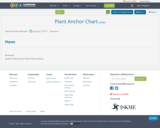
Anchor Chart for the Plant Unit of CKLA.
- Subject:
- English Language Arts
- Material Type:
- Diagram/Illustration
- Date Added:
- 03/09/2017

Anchor Chart for the Plant Unit of CKLA.
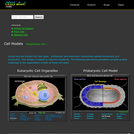
Living cells are divided into two types - procaryotic and eucaryotic. This division is based on internal complexity. This website will provide you with graphic roadmaps to the organization of both of these cell types.
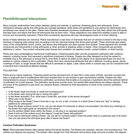
This online article, from Biodiversity Counts, offers insight into how plants interact with arthropods. It has: an explanation of the difference between detrimental and mutually beneficial relationships; some of the chemical and mechanical modifications plants have made to attract helpful arthropods and fend off harmful ones; a detailed overview of pollination, with descriptions of seven common pollination syndromes; a detailed overview of plant defense mechanisms; and a series of questions students can ask when they see an arthropod on a plant in order to learn more about how the two are interacting.

Try your hand at assembling this plant cell jigsaw puzzle created with an image from CELLS alive! This puzzle is 32 pieces and generally takes a few minutes to solve. Have food!
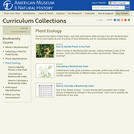
The unit is designed to be completed in six or more sessions. The comprehensive curriculum materials contain information for teachers, including activity tips and an overview of the many varied reasons that plant life flourishes in one plot but not another. Students speculate on why plants are more abundant in some areas of the site than others. They list factors that might account for the differences, such as temperature, humidity, light, soil, rainfall, wind, and human or animal activity, and figure out how they can collect more data on these factors. They discuss why it might be important to take a count of all the individual plants in each plot and develop a plan for conducting the field study. A reading selection describes how scientists count plants and gives students tips for conducting their own survey. Students then count plants and record their data. Several optional activities are provided.
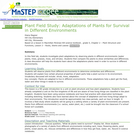
This is a field investigation where students observe plants in a school forest setting. Students then compare adaptations of plants from different parts of the forest.
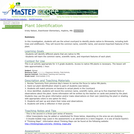
This activity is a field investigation where students identify native MN plants and record the common name, scientific name, and important information about each.
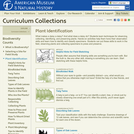
This unit on plant identification helps students prepare for their fieldwork by developing their observational skills and introducing them to resources that will help them with plant identification. It's designed to be completed in five or more sessions and has comprehensive curriculum materials information for teachers, including overviews of binomial nomenclature and dichotomous keys. Additionally, a guide to finding local specialists is available online. There are optional activites and information on supplemental resources available on line.
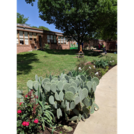
In this lesson students will use knowledge of the needs of living things to examine their outdoor classroom for these factors that help plants grow.

OBJECTIVESStudents will be able to name the basic parts of a plant.Students will also know the function of these parts.Students will construct their own plant model and explain it to a partner.Students will keep a steady beat while stomping and clapping to the plant song.EDUCATION STANDARDSHelp students better understand that natural world, and the functions of plants specifically.Engage in intelligent conversation with their peers about what they learned.MATERIALS NEEDEDQ-tips Pipe cleanersCotton ballsMarkersPencilsPaperStringGlue sticksInternet access/plant songVERIFICATIONI will ask them to rename each part after we put the plant together.Students will tell the people around the name and function of each part.We will talk about all these things again as a class.ACTIVITYHave students come up in groups to get materials (write on the board what all they need)Each student should start with one piece of paper, one cotton ball, ten qtips, two pipe-cleaners, glue, and markers and five pieces of string.Start building the flower starting with the stem and then the roots and the leaves and last the flower, pausing after each step to make sure everyone is on the same page and name each piece after we make it.Explain what each part does for the plant i.e. What do roots do for a plant and how? What does the stem do? Why does it have leaves? What does the flower do?All parts work together to keep the plant healthyRoots absorb water and nutrients for the plant The stem keeps the plant grounded and strong and carries water to the leaves and flowersLeaves make plant food by taking in air and sunlightThe flower makes seeds that carried away by the wind or insects and then turn into new plantsHave students clean up their areaOnce the flower is done, point to a part of the plant and ask them what it is. Write the answer on the board so they can see how to spell it and have them label their plant. Tell them again what each part does.Have them explain and tell the people around them what each part is and what it does At the very end, we will listen to the plant song while keeping a steady beat.I’ll divide the class in half, half will stomp, half will clapThe plant song will reiterate what we went over in class (and hopefully get stuck in their heads)
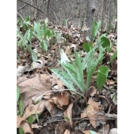
In this lesson, the students will be given time to create their own understandings about the parts of plants as they explore plants hands-on in the outdoor classroom.
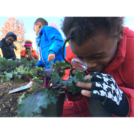
Students can research a particular plant on particular aspects like where does it thrive, how big does it get, etc.
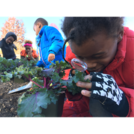
STUDENT ACTIVITY – 1st Grade: This is a distance-learning lesson students can complete at home.The students will be given time to create their own understandings about the different parts of plants as they explore them in an outdoor setting.This activity was created by Out Teach (out-teach.org), a nonprofit providing outdoor experiential learning to transform Science education for students in under-served communities. .
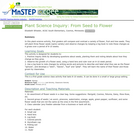
This activity is a first grade life science activity where the students practice inquiry skills by developing questions about seeds, planting them and noting details about how they change as they grow.

Learners will be able to explain the process of pollination and sexual reproduction of flowering plants
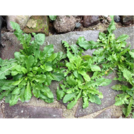
STUDENT ACTIVITY -- 3rd -- NCThis is a distance-learning lesson students can complete at home.Students will pull weeds to explore plant structures that promote survival.This activity was created by Out Teach (out-teach.org), a nonprofit providing outdoor experiential learning to transform Science education for students in under-served communities. .
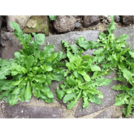
In this lesson, students will explain their observations and understanding of various plant's external parts and how they help the plant survive in its environment.

This resource is a video abstract of a research paper created by Research Square on behalf of its authors. It provides a synopsis that's easy to understand, and can be used to introduce the topics it covers to students, researchers, and the general public. The video's transcript is also provided in full, with a portion provided below for preview:
"Many eukaryotic cells make and release small pockets of membrane called extracellular vesicles (EVs). EVs facilitate communication between cells in an organism and can transport many molecules like proteins, RNA, and lipids. Plants are no exception, and many types of EVs can be isolated from their juice, flesh, and roots. In the plants themselves, these EVs facilitate a range of critical functions like immunity, development, and plant–fungi communication. But EVs derived from plants could even have a place in human medicine. In particular, these EVS could be used to transport medications. Plant-derived EVs are more biodegradable and typically less expensive to generate than conventional synthetic carriers, as they can be extracted in bulk. This field is in its early stages, but studies have suggested that plant-derived EVs may also be less toxic and allergenic than conventional carriers..."
The rest of the transcript, along with a link to the research itself, is available on the resource itself.
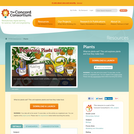
What do plants eat? This unit explores plants and how they make food.
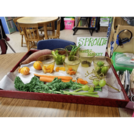
Students will use knowledge of life cycles to collect evidence of the stages of life a plant goes through.